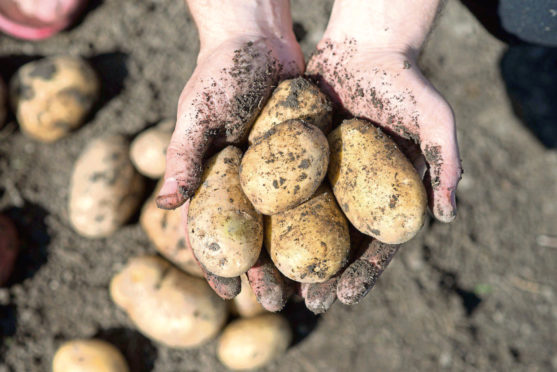The last week of January is one I dread as I cannot delay any longer the painful process of trying to complete my self-assessment tax return.
Even worse, is the pain of having to pay the tax bill.
Farmers generally are not well disposed to paying tax at the best of times.
Many would far rather hand over their hard-earned cash to their machinery dealer for a big shiny new tractor than hand it to the taxman, even if it is hard to justify it from a business perspective.
This month farmers and growers in the horticulture and potato sectors face a difficult choice as they vote on whether to continue paying the tax or levy to fund the Agriculture and Horticulture Development Board (AHDB).
The ballot on horticulture closes on February 10 and the potato ballot opens on February 17 and runs through to March 10.
As an independent member on the main board of AHDB my approach to levies has been guided by the Radcliffe review which set up AHDB back in 2008.
Rosemary Radcliffe set two tests to determine whether government should levy a tax on each sector.
Firstly, was there market failure in the sector with the private sector failing to offer the services growers needed? Second, was the sector fragmented with many small businesses unable to individually carry out their own research and development, marketing or promotion work?
At the time she concluded there was market failure, that producers were fragmented and lacked scale and therefore justified a government-backed levy.
She recommended that pigs, dairy, beef and lamb, cereals, potatoes and horticulture should continue to pay a levy, but the sectors would be rolled into one levy board – AHDB – to create efficiencies.
It seems to me that these two fundamental questions should be at the forefront of producers’ minds when they weigh up whether to vote for or against the levy.
In the horticulture sector the vast bulk of the £7 million annual levy is spent on research to find new solutions for growers to use in combatting pests, weeds and diseases.
Another key area of work is the dedicated service to secure emergency use of chemicals for growers across 200 minor crops. Vital work.
Looking ahead, the environmental pressure to phase out chemicals, reduce fertilisers and cut carbon is going to intensify in the coming years. That raises some fundamental questions if growers wish to get rid of the levy.
Against a background of Scottish Government cuts to the Hutton and SRUC budgets, who will fund the vital research work in future to find solutions to these huge challenges?
Will the private sector do it? If so, who pays? And will it be independent?
Larger growers may be able to fund their own in-house research but where does that leave smaller growers?
Who will fund the work to secure emergency authorisations for specialist crop products each year?
The AHDB potato levy is worth £6.6m and we spend nearly half of that on research and knowledge exchange, delivered through our field trials on strategic potato farms.
We spend another 22% of the levy on market analysis and getting market and research information out to growers both digitally and through the trade press.
A further 14% is spent on opening new export markets, promoting potatoes to consumers and educating more than five million primary school children where their food, and especially tatties, comes from.
Potato growers face the exact same environmental challenges as the horticulture sector.
The same fundamental questions arise if the vote were to end the levy.
Who pays for future research to tackle these massive challenges? What happens to smaller growers if they are unable to fund their own research?
Who funds the research work to help open new export markets such as Thailand, Morocco, Israel and the Canaries for Scottish seed tatties? Who promotes tatties in our schools and to consumers in future?
Producers need to put aside their aversion to paying tax and think long and hard about the answers to these questions before voting.
Many growers I have spoken to say AHDB is too bureaucratic, too costly and unresponsive to their needs and there is some truth in these allegations.
The pandemic, however, has highlighted areas where we can cut costs and improve our engagement with growers.
Using Teams and Zoom for meetings and events instead of dragging people all the way to Stoneleigh has the potential to deliver huge savings. Home working can also deliver substantial savings in overheads.
Digital provides the opportunity to involve large numbers of growers in deciding how to spend their levy. It also allows us to reach out to many more producers through webinars and digital events.
AHDB is determined to seize these opportunities to make us leaner, more nimble and more responsive and move away from the bureaucratic and costly structures we currently have. And of course, with a guaranteed ballot every five years this is not your final say.
So, a yes vote is a vote for change not the status quo.
The danger of a no vote is, you throw the baby out with the bath water.
- George Lyon is a former MEP. He is a senior consultant for Hume Brophy.
